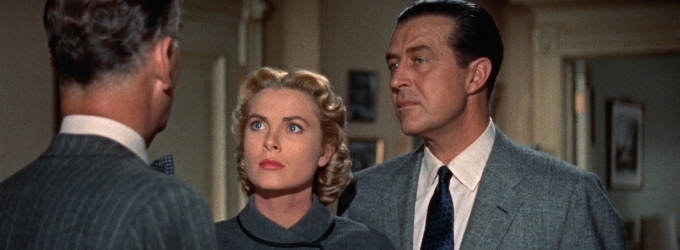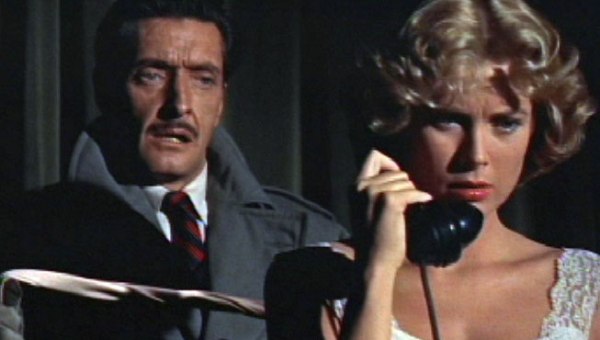 “Hitchcock’s 3D Masterpiece” proudly proclaims the re-release trailer for this 1954 effort by the Master of Suspense. Frankly “masterpiece” might be pushing it, but Hitch’s only excursion into three dimensional filmmaking is still an enjoyable, if unexceptional, entertainment. The director’s distinctive black humour and thematic preoccupations remain intact, but he tackled similar subject matter in many other, much better works. He was basically treading water creatively, yet the use of 3D does add a little interest to what is otherwise a fairly by-the-numbers exercise.
“Hitchcock’s 3D Masterpiece” proudly proclaims the re-release trailer for this 1954 effort by the Master of Suspense. Frankly “masterpiece” might be pushing it, but Hitch’s only excursion into three dimensional filmmaking is still an enjoyable, if unexceptional, entertainment. The director’s distinctive black humour and thematic preoccupations remain intact, but he tackled similar subject matter in many other, much better works. He was basically treading water creatively, yet the use of 3D does add a little interest to what is otherwise a fairly by-the-numbers exercise.
Grace Kelly stars as the rather insipid Margot Wendice, wife to Tony (Ray Milland, doing his best Cary Grant impersonation), a one time tennis pro now living off her fortune in London. Tony has learned that Margot once had a fling with the visiting Mark Halliday (Robert Cummings) and, with their marriage going nowhere, he uses the opportunity to try to kill Margot and inherit her money. He blackmails an old school friend, Captain Lesgate (Anthony Dawson), in to taking on the job, but when things don’t go according to plan, Tony is forced to improvise.
No-one made the business of murder more fun than Hitch.
Based on a play, the film feels very stagey, not least because Hitchcock does little to open it up cinematically – nearly all the action takes place inside the Wendice’s flat. Instead he opts to let the 3D do the work for him. There’s a pleasing sense of depth to the photography, and almost no instances of objects being hurled towards the camera; only Grace Kelly’s hands, desperately reaching across a desk while being throttled by Lesgate, try to invade the auditorium. The curious placement of table lamps in almost every shot, where they usually obscure part of the screen, constantly calls attention to itself. Was Hitch trying to say something about the business of murder being planned in full light and plain view? Or is it simply a neat trick to create a better sense of spying on events?
As usual, Hitchcock isn’t interested in the whodunnit aspect to the story; the police inspector (John Williams) is sidelined for most of the film. He’s more interested in getting us to voyeuristically enjoy watching the murderer plan – and almost get away with – the dirty deed. And no-one made the business of murder more fun than Hitch. Lesgate’s attempt to bump off Margot is the highlight of the show, he waiting behind her with a stocking, ready to strangle her just as soon as she hangs up the phone. The sense of timing is exquisite. If only the rest of the film had shown as much verve.
It would be remiss not to commend the restoration team for transferring the film into today’s 3D technology so well; quite apart from how gimmicky you might consider it to be, it has likely never looked so good.
Review courtesy of the Arts Picturehouse Cambridge
httpvh://youtu.be/_rLa7HIkkQc


* Spoiler alert * In fact, the stocking comes later, as the substituted, fake murder-weapon, chosen by Tony to implicate Margot : from what I could judge of it on the ground later, the actual throttling was being done with one of those white silken scarves with tassles that men wearing DJs sometimes sport. (Who knows why that was the article of choice, rather than a good length of, say, hemp…)